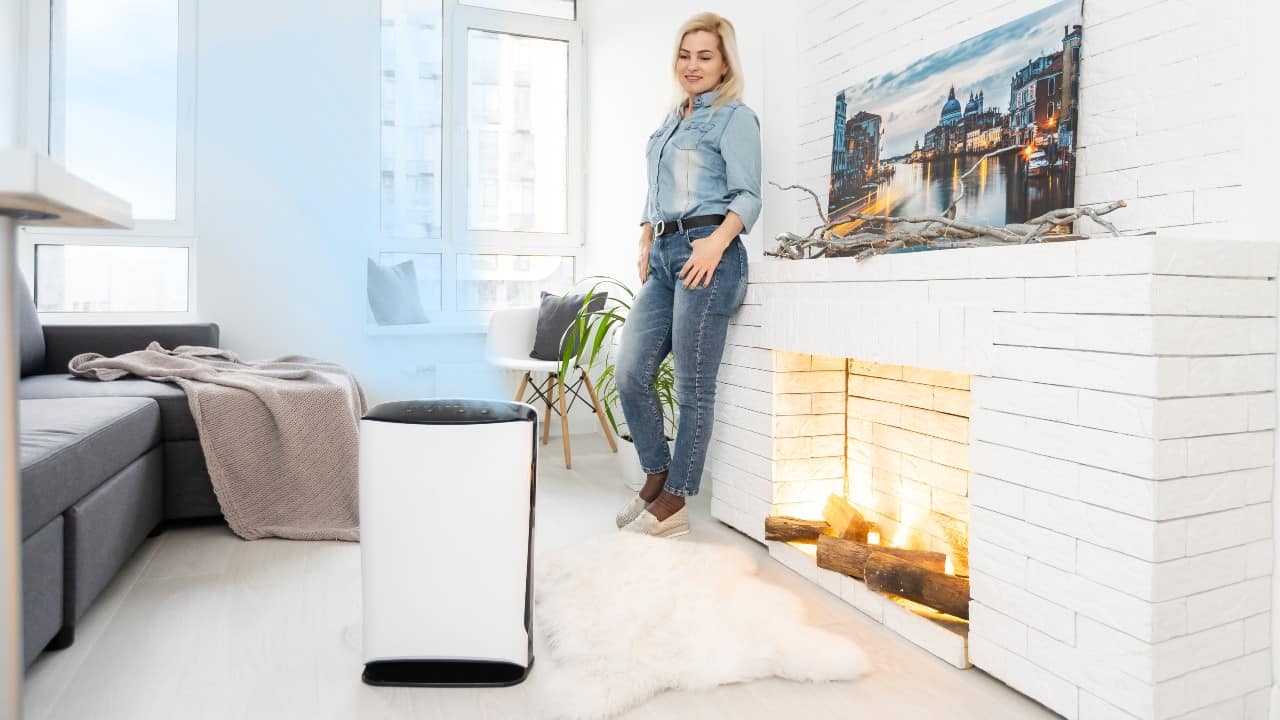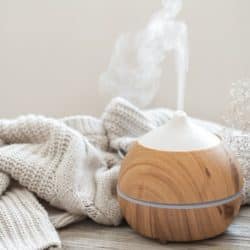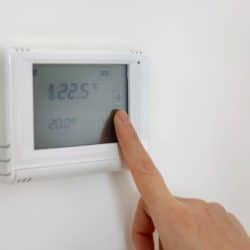During the winter, most homeowners tend to focus on the indoor temperature.
However, indoor humidity is just as important – it plays a crucial role in keeping your home environment both comfortable and healthy. For that matter, maintaining adequate indoor humidity levels year-round is essential.
Low humidity can cause sleeping problems, cracked lips, nosebleeds, sore throats, as well as itchy and dry skin. High humidity (or excess humidity, to be more precise), on the other hand, can lead to a variety of issues, including structural damage and mold growth.
Contents
What is Relative Humidity?
Indoor humidity can be measured in several different ways, the most common of which is RH – relative humidity. This measurement is expressed as a percentage.
To put it simply, relative humidity denotes a ratio of the amount of water vapor – or moisture levels – currently present in the air and the highest amount of water vapor that this air is capable of containing at a specified temperature.
A 100% relative humidity signifies that the air is currently saturated since it’s holding the highest possible amount of water vapor at a specified temperature.
As you probably already know, warm air holds more moisture than cold air. The result of this is quite obvious – when the outdoor temperature increases in the summer, the outdoor air humidity increases as well. And in the winter, when the outdoor temperature goes down, so does the humidity.
One thing that can exacerbate the inadequate humidity issue is using your heating vents during the winter months. This can easily dry out your indoor air.
Whenever you heat your house – whether with a heat pump or by some other means – the indoor air’s water vapor capacity increases. However, the same cannot be said for the air’s moisture content, which doesn’t change.
The result of this is winter indoor humidity dropping down to a genuinely uncomfortable level.
If you live in a cold climate, keep reading and find out how to enjoy a comfortable temperature during the wintertime while still maintaining ideal indoor humidity levels.
So, What’s the Best Indoor Humidity Level for Winter?

The best way to describe the process of maintaining ideal indoor humidity in winter would be to call it a “balancing act”.
When there’s not enough moisture in the air, the inhabitants of the house are bound to start feeling uncomfortable. Potential health concerns should also be mentioned. Excess moisture, on the other hand, can lead to condensation and consequently the growth of mold spores.
So, what level of indoor air humidity is ideal for the wintertime? According to the U.S. Environmental Protection Agency, indoor humidity levels should always be kept below 60 percent. Ideally, they should be somewhere between 30 and 50 percent.
Keeping your home’s humidity level in this range is an excellent way of ensuring that it’s not too humid or too dry during the winter months. It’s the ideal house humidity range and one that’s best for the building’s structural integrity and the health of all those living in it.
How Do I Monitor Humidity in My House?
The device that measures relative humidity inside a home is called a hygrometer. Fortunately, most of the currently available devices of this type are digital, and therefore exceptionally easy to use. They provide accurate readings and are also quite cheap.
As far as I’m concerned, the best hygrometers are the ones that are equipped with multiple sensors. These allow complete humidity control, letting homeowners easily adjust humidity levels around the rooms of their homes.
The best hygrometers often feature remote monitoring capabilities and can be connected to smart devices through Bluetooth or Wi-Fi. With one of those, monitoring the home’s humidity levels is as easy as it gets.
If you want to be able to easily add moisture as well as remove excess moisture, and, in that way, maintain adequate humidity levels inside your home, consider buying a hygrometer, a humidifier, as well as upgrading your HVAC system.
The last thing worth mentioning here is that, besides measuring the amount of humidity in your home’s air, most hygrometers can also measure the ambient temperature. As you can already guess, this will help you achieve an ideal indoor temperature during winter (68 degrees Fahrenheit).
The Issues Caused by Low Humidity
Dry indoor air in the winter can have a negative effect on both your health and comfort. What is more, non-humid air can also cause damage to your house.
Let’s take a quick look at some of the most common issues related to dry indoor air:
Scratchy Throat

One of the most obvious warning signs that you’re about to get sick is when you have a scratchy or sore throat. However, this can also be a symptom of breathing in dry air and having poor indoor air quality in general.
Keep in mind that the mucous membranes inside your throat can dry out very quickly. Fortunately, this unpleasant feeling can be easily taken care of by simply maintaining an adequate humidity level inside your home.
Nosebleeds & Irritated Sinuses
Just like in the case of a scratchy or sore throat, the mucous membranes and sinus cavities in your nose can also dry out very quickly. This typically leads to an irritating or burning sensation.
Nosebleeds and nasal congestion are also caused by these irritated, dried mucous membranes. If all of this sounds way too familiar, make sure to add humidity (i.e. extra moisture) to the air inside your house.
Dehydrated & Irritated Skin
The moisture barrier that’s present on your skin requires constant replenishment. As you can already guess, this barrier evaporates significantly faster in dry air. The result of this is cracked, flaky, and itchy skin.
And since you can’t really open windows to let in the fresh air during wintertime, your best bet is to replace the dry air with moist air through the use of warm-mist humidifiers or cool-mist humidifiers. You can also achieve adequate wintertime humidity levels through the use of whole-home humidifiers.
Eyes Problems
When there’s not enough humidity in the air, our eyes become drier and therefore more susceptible to irritation.
This happens because the lack of moisture in the air can cause increased evaporation of tears from the eye tissue surfaces. You can easily prevent this from happening by getting a humidifier and using it to increase your house’s humidity levels.
Static Electricity
This kind of electricity dissipates naturally when the indoor air is adequately humidified. Dry air, on the other hand, is very good at storing electrons.
This results in a buildup of static electricity which can, in turn, lead to electric shocks when you or your family members touch a metal surface, a doorknob, or any other conductor. This is yet another reason why it makes sense to add humidity to your indoor air if it’s too dry.
Wood Damage
Finally, dry air can easily soak up the moisture that is naturally present in your home’s wooden elements. The result of this is wood bending, splitting, and cracking.
In particular, dry indoor air can severely damage a window frame, furniture, wood flooring, and sometimes even musical instruments. Long-term exposure to a low level of humidity puts even properly-treated wood at risk.
How Do I Increase Indoor Air Humdity in Wintertime?
The most effective and reliable way to increase humidity in winter is by using a humidifier. Thanks to its built-in humidistat, this kind of device can quickly and efficiently add moisture to the air inside your home and maintain an adequate humidity level.
These appliances range dramatically in function and size. An ultrasonic humidifier, as well as cool-mist and warm-mist humidifiers, can easily increase the humidity level in a single room.
On the other hand, a whole-home humidifier – which you’re supposed to connect to your already-existing HVAC system – is capable of maintaining humidity levels throughout the entire house.
Regardless of which one of these options you decide to go with, make sure that it’s suitable for your needs and the size of your home.
Other Ways to Add Moisture to Your Home’s Air

Reduce Dryer Usage
If there’s a specific living area that you’d like to add moisture to, let your clothes dry in that room instead of inside a tumble dryer.
The moisture that is present in these wet clothes will evaporate into the air, and, in that way, increase humidity in the room. Reducing dryer usage can also save you on energy costs.
Add Plants to Your Home
Another great way to increase humidity levels throughout your home is by adding houseplants to it.
Through a process called transpiration, houseplants release moisture into the air. The more plants you add to the rooms of your home, the easier it will be to notice this moisture-releasing effect.
Shower With the Bathroom Door Open
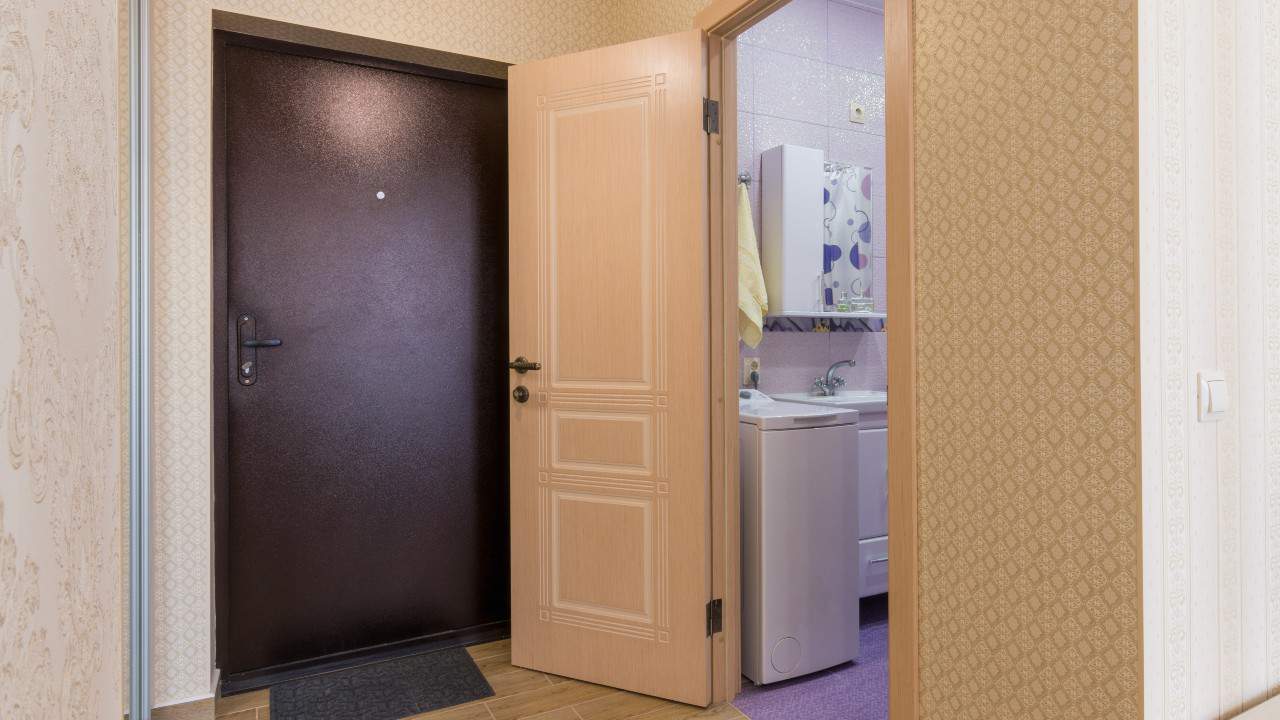
The most humid room inside a house is almost always the bathroom.
Make good use of the warm air that appears when you’re showering and release steam to the other rooms by keeping your bathroom door open. The shower steam is bound to increase humidity levels throughout your home.
The Dangers of High Humidity Levels
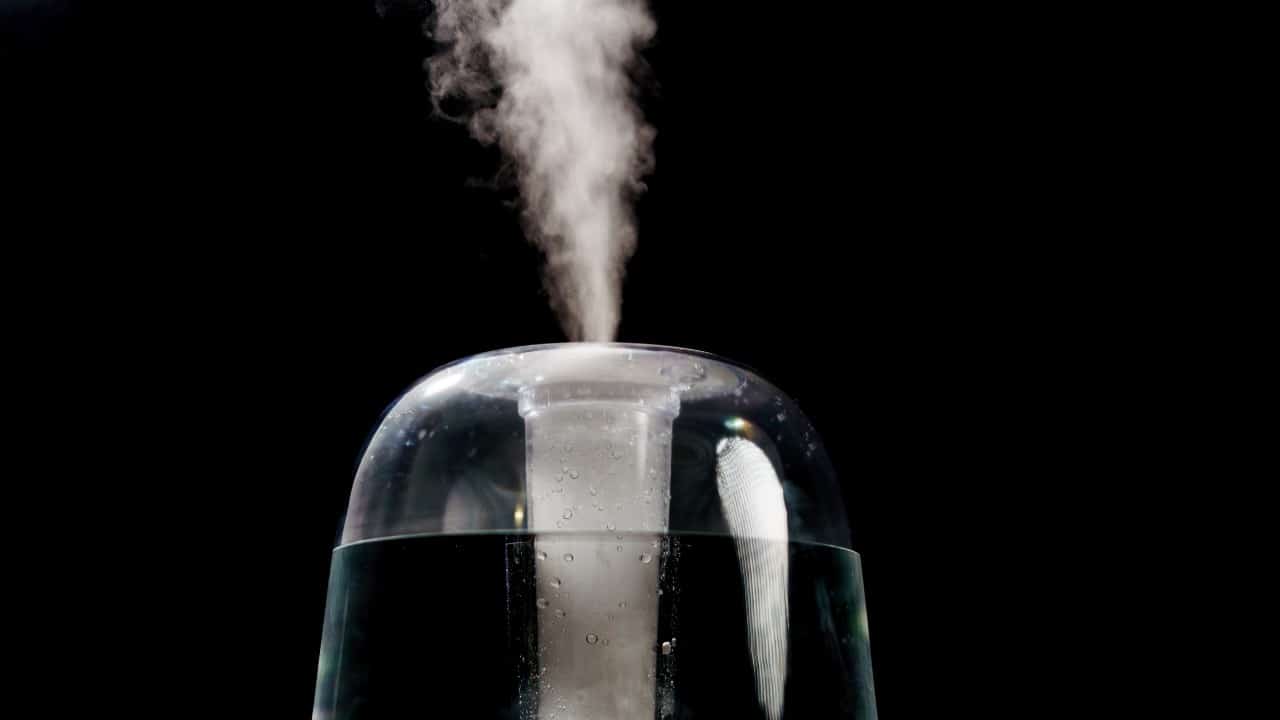
Although this is not really common during wintertime – when there’s cold air everywhere – you can still have high humidity levels in the rooms of your house.
The first sign of a home that’s been over-humidified is usually condensation. When warm, moisture-heavy air hits a cold surface, it will create water vapor, which will then condense and form droplets of water.
If it’s not taken care of, condensation usually causes wood rot and the growth of mold spores. Fortunately, high humidity can be tackled in several different ways, including:
- Using a humidifier, with the whole-home humidifier being the best option
- Ensuring that your kitchen and bathroom exhaust fans are working correctly
- Improving ventilation throughout the rooms of your home
- Turning down your humidity setting
The Takeaway
Indoor humidity can have a massive impact on your comfort and health – just like the indoor temperature.
When you’re heating your home during the winter, maintaining an ideal level of humidity can be challenging, particularly for those who live in really cold climates.
However, if you get yourself a humidifier of the right size (sometimes, whole-home humidifiers are the best choice), you’ll be able to maintain adequate humidity levels and keep the dry air-related dangers at bay while staying warm and comfortable throughout the season.
